CSA Celebrates the 2024 Women in Cryogenics and Superconductivity

The Cryogenic Society of America and Cold Facts celebrates distinguished women who embody the expertise and drive that is putting cryogenics and superconductivity at the forefront of energy, aerospace, quantum, and myriad other fields of industry. Congratulations!
- Jo Bartlett
- Melania Charles
- Juliette DeLoye
- Nasim Fatemighomi
- Hailee Morgan
- Atefeh Najfi
- Dominika Porwisiak
- Renée Tozer
- Anne-Marie Valente-Feliciano
- Saee Vyawahare
Jo Bartlett
Lead Scientist—Mullard Space Science Laboratory, University College, London, UK

What projects are you currently working on?
I am developing a novel, fast-thermal response, miniature, tandem-style continuous adiabatic demagnetization refrigerator called the Millikelvin Cryocooler (mKCC), which is the first one of its kind in the world. The mKCC is being developed for both space- and ground-based applications and has required many individual component advancements and developments over the last 10 years.
What accomplishment are you most proud of?
What was the challenge and how did you and/or your team meet it?
I’ve worked on designing and developing ADRs for almost 20 years, and there are several accomplishments that I am really proud of. During my Ph.D. I focused on accurately modeling the thermal performance of an ADR that we were building for the European Space Agency; my model was so accurate that it was also used as a diagnostic tool to understand the performance limitations that we were seeing in terms of thermal boundary resistance within the paramagnetic salt pill. This model has also been used to design the mKCC that I have been working on for a large part of my career and has been proven to be accurate to within a few percent. Developing the mKCC is also one of my proudest achievements – I was both lead scientist and project manager and have seen this project through from its initial conception, preliminary design and individual component development to its building and testing, working with a range of mechanical, electronic and software engineers. To put this into context, we had a single-shot ADR with a mass of 45 kg, a diameter of 215 mm and a height of 400 mm, plus the mKCC is a continuous ADR with a mass of
What advancements in cryogenics are you hoping to make in the future?
I am focused on driving the mKCC development program forward to achieve multistage continuous cooling and sub-100 mK, as well as converting what is a ground-based prototype into a space-worthy system. Beyond that, I hope to continue down the path of miniaturization to open up ultralow temperature research to a wider range of users including non-cryogenic specialists, with the goal of maximizing applications and usability.
What advances for women would you like to see in the fields of cryogenics and superconductivity?
I would like to see true equality for women in cryogenics, with women undertaking careers in cryogenics considered the norm rather than the exception. I would also like to see more women doing hands-on experimental physics in laboratories and given equal opportunity to do so, rather than being encouraged into data analysis and desk-based roles. We are just as capable of working on a cryostat and designing, building and testing instrumentation as anyone else.
What would be the best approach to getting more women into your field?
I believe the best approach to getting more women into this field is encouragement and support from an early age and empowering young women to have the confidence to choose and carve out their own career. I think a lot of young women are interested in STEM but are wrongly influenced and put off along the way by various people, starting at school. This happened to me and I’m glad I didn’t listen! It can also feel intimidating being a woman in a male-dominated research environment, and it can be even more difficult when you disagree with those male peers. We need to make sure women feel confident in their ability and within their environment to have a voice and to be assertive when necessary. I believe more women in senior positions would help to change this dynamic. While unfortunately there are still people with outdated opinions on women working in this field, I do believe those people are now in the minority, and that most people are accepting, welcoming and willing to provide support. I would like to encourage more women to consider a career in cryogenics as I personally find the research very rewarding and wouldn’t want to do anything else.
Vice President of Global Sales and Marketing, Cosmodyne, LLC of Nikkiso Ltd.
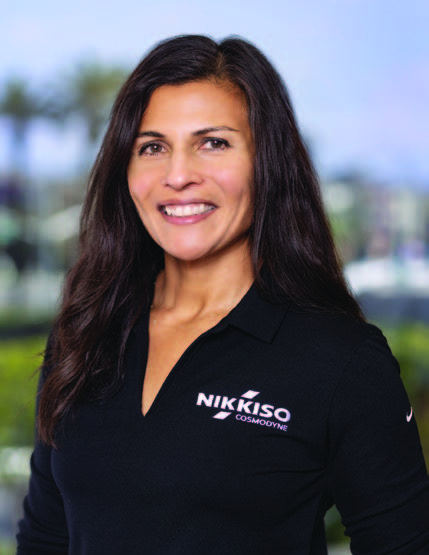 What projects are you working on now?
What projects are you working on now?
I am currently very involved in several hydrogen liquefaction systems for clients that are developing green hydrogen projects. I am also involved in several natural gas liquefaction opportunities for utility peak shaving applications in the US as well as merchant natural gas liquefaction plants for overseas clients that are using LNG to produce power. Finally, I’m working with my team on a handful of international industrial gas opportunities for cryogenic air separation plants with clients that sell these air gases in the marketplace. My team and I directly interface with a variety of customers from EPCs working on large LNG export facilities to natural gas utility companies and independent and major industrial gas companies around the world.
What accomplishment are you most proud of? What was the challenge and how did you and/or your team meet it?
I’m most proud of several awards where I developed a strategic approach using overall value analysis to come up with the best solution for a client. By using my engineering and business background and listening very closely to the customer, we were able to develop very creative solutions that surpassed a client’s expectations and were the best fit for their requirements. As a result of this approach, we have been awarded several strategic projects both in the US and abroad. This has helped us be a leading provider of peak shavers in the US and for air separation plants all over the world.
What advancements in cryogenics are you hoping to make in the future?
Given the very aggressive push towards greener energy in the US and abroad, cryogenics have a very important role in getting the world there. I’m hoping that, like in natural gas and air separation, we also become a strategic and key supplier for hydrogen liquefaction systems. I believe that there is a big opportunity in the market for an independent agnostic company like us with a proven history of providing optimized cryogenic solutions to meet the growing need for hydrogen liquefiers.
What advances for women would you like to see in the fields of cryogenics?
I would like to see more outreach in engineering schools to promote our field and to have more women talk about what a great and varied field this is and how many different paths the work can lead you to. My work has always been technically challenging and full of many rewards.
What would be the best approach to getting more women into your field?
I think there should be more outreach in high schools and universities by businesses like ours that are in the cryogenics industries. Shadowing opportunities, summer internships, participation in university job fairs, etc., with women in the field would be effective. And in all the marketing, showing how cryogenics can improve the world would be effective at attracting not only more women but a lot more young people. We’ve recently used this approach at a job fair and had a very long line of candidates waiting to talk to us.
Juliette DeLoye
Master's Candidate in Applied Science in Engineering at Laurentian University, Education and Outreach Coordinator—SNOLAB
 What projects are you working on now?
What projects are you working on now?
I am currently working on building a radon trap for the SNO+ experiment, a large-scale neutrino detector at SNOLAB.
What accomplishment are you most proud of? What was the challenge and how did you and/or your team meet it?
Beginning my career at SNOLAB is an accomplishment of which I am extremely proud. I have the privilege of working in a world-renowned lab with some of the most influential people in the physics world today. Each day I can contribute meaningfully to the scientific work happening in the lab. When I am wearing my education and outreach hat, I get to demonstrate how fun and interesting our work truly is!
What advancements in cryogenics are you hoping to make in the future?
Well, this is a tough one. I am hoping that cryogenics will be made more accessible in a variety of industries. For example, we have had interest from other people about safely using cryogenics in mines where they are interested in using cryogenics to cool mining environments.
What advances for women would you like to see in the fields of cryogenics and superconductivity?
I would love to see more networking opportunities where we can meet other women working in a variety of different industries. This would be highly beneficial for students, especially, to gauge if there is a place for them individually in the field of cryogenics.
What would be the best approach to getting more women into your field?
Providing outreach opportunities is always a fantastic way to meet and encourage other women to get into this field. Inspiring them through work led by women, highlighting the intriguing work currently in progress, and expressing the passion we share for it at SNOLAB are crucial elements in sparking the interest of others.
Nasim Fatemighomi
Staff Scientist--SNOLAB
 What projects are you working on now?
What projects are you working on now?
I am working on the DEAP-3600 experiment which is a dark matter liquid argon detector. I am also a radon assay scientist; this work supports many of the experiments at SNOLAB, an astroparticle physics lab focused on neutrino and dark matter physics, deep underground in Canada. For my assay projects, I work with liquid nitrogen that is produced by the nitrogen plant located at SNOLAB to trap radon atoms. I have recently joined the nEXO experiment, which is a next-generation neutrino experiment using liquid xenon.
What accomplishment are you most proud of? What was the challenge and how did you and/or your team meet it?
I am proud that we can measure radon levels from experimental components here at SNOLAB. I am especially proud of the new gas assay procedures that we have developed recently.
What advancements in cryogenics are you hoping to make in the future?
I think we need more automation in the future to use cryogenic liquid for assays.
What advances for women would you like to see in the fields of cryogenics and superconductivity?
I hope to see more women in supervisory and leadership roles in the field of cryogenics.
What would be the best approach to getting more women into your field?
I think we need more outreach activities at the various school levels to introduce students to cryogenic technology and also to talk about its applications in other fields, including astroparticle physics.
Hailee Morgan
Design Engineer—CPC Cryolab (CSA CSM)
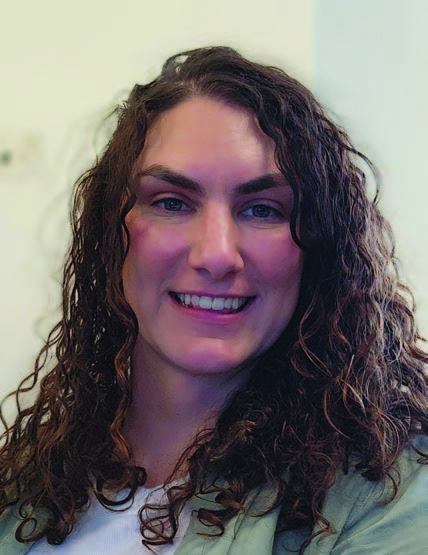 What projects are you working on now?
What projects are you working on now?
Currently, I’m working on five different new product development projects of different stages in design. Most of these I cannot discuss at the moment, due to their nature. However, we have made public the new upcoming safety relief valves designed primarily for liquid and gaseous hydrogen. One of the unique features of this valve is the balanced bellows seal to ensure backpressure insensitivity and repeatable valve setting. This will be a full-family product line with two different body designs for various applications and sizes from one-half inch to 10 inches and rated up to 42 bar. Additionally, I am always working on existing product improvements for performance, durability and serviceability.
What accomplishment are you most proud of? What was the challenge and how did you and/or your team meet it?
I have one new product development project that came out of nowhere. I was sick one night and couldn’t sleep. I spent the next seven hours thinking about a new design concept not seen before in the industry. This valve could potentially solve several problems and the challenges of vacuum jacketing a particle style of valve for serviceability in the field.
What advancements in cryogenics are you hoping to make in the future?
I’ve always liked to think of myself as an out-of-the box thinker and hope that my designs will help industry reach a high level of safety as hydrogen becomes a major factor in our everyday lives. I’m hoping to help build the groundwork for that.
What advances for women would you like to see in the fields of cryogenics and superconductivity?
Having women in STEM is crucially beneficial to bringing new ideas and different perspectives, regardless of the area of industry. However, I would love to see this industry be a trendsetter to highlight the amazing accomplishments and contributions women have made, whether it be in research, design or leadership roles that empower the next generation of women.
What would be the best approach to getting more women into your field?
Eliminating stereotypical gender roles early on in life is the first step we need to take. We tend to put boxes around the genders of younger people, and this makes breaking that barrier more difficult, almost stigmatized, but it’s improving every year. Secondly, engaging in hands-on activities really helps development but also shows the amazing phenomena that occur in these fields and the potential benefits for the planet and future generations to come.
Atefeh Najafi
Ph.D. in Reproductive Biology, University of Saskatchewan
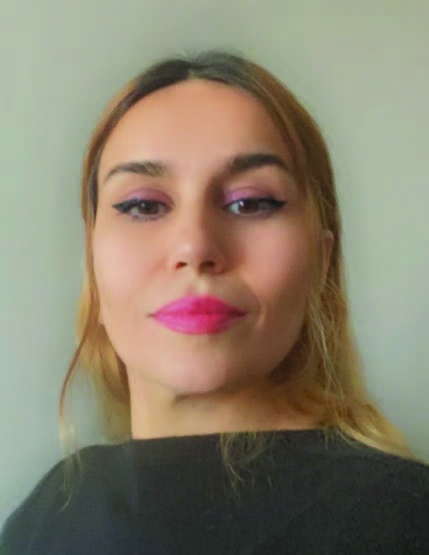 What projects are you working on now?
What projects are you working on now?
I am currently working on optimizing the ovarian tissue cryopreservation technique. This technique aims to preserve the fertility and endocrine function of young women and girls who must undergo sterilizing cancer treatments. Ovarian tissue cryopreservation is a process where ovarian tissue is extracted and stored in liquid nitrogen before it gets harmed by cancer treatments. Once the individual has successfully overcome cancer, the goal is to either transplant thawed ovarian tissue or isolate the follicles from the tissue, mature them in vitro and use them for in vitro fertilization. This technique could potentially provide female cancer survivors with the opportunity to have their own children in the future. However, this technique still has points to improve.
What accomplishment are you most proud of? What was the challenge and how did you and/or your team meet it?
One of the accomplishments I am most proud of is being part of a team that aims to establish Saskatchewan’s first, and likely Canada’s leading, fertility preservation program for women and girls with cancer. The challenge was that there was no such option in Saskatchewan. I played a significant role in the success of this program through designing and conducting research, holding workshops and co-writing grants and papers. The program’s goal is to offer advanced fertility preservation services to women and girls with cancer across Canada. This accomplishment is particularly meaningful because it provides hope and a positive fertility outlook for women and girls in need during a particularly challenging time in their lives.
What advancements in cryogenics are you hoping to make in the future?
In the future, I hope to develop more optimal and safer freezing techniques for the preservation of reproductive cells and tissue that can be widely applicable in clinics for the fertility preservation of cancer survivors, individuals facing fertility challenges, and healthy women who want to postpone their pregnancy or menopause.
What advances for women would you like to see in the fields of cryogenics and superconductivity?
I would like to see more women leading research and development in these fields. Additionally, I hope that advancements in these fields can lead to better healthcare options for women, such as improved fertility preservation methods.
What would be the best approach to getting more women into your field?
Encouraging more women to enter my field requires initiatives such as education and awareness programs, role models, mentorship programs, grants and funding for women, supporting work/life balance, creating networking events and platforms, and creating inclusive work environments that value diversity and equality. These strategies are key to attracting more women to any field of research and enhancing the quality and impact of research. I believe that everyone has a unique superpower that can contribute to scientific advancement.
Dominika Porwisiak
Engineer with a Master of Science in Power Engineering—US Department of Energy’s Fermi National Accelerator Laboratory (Fermilab—CSA CSM) Cryogenics Department
 What projects are you working on now?
What projects are you working on now?
Currently, I am working on a helium recovery project. With my team we are developing the system that will allow us to save huge amounts of money and make Fermilab more sustainable. Helium is a non-renewable resource, and its extraction and processing have environmental impacts. Thanks to this system, most helium used for testing superconductors will be purified and reliquefied, ready to use for other purposes.
What accomplishment are you most proud of? What was the challenge and how did you and/or your team meet it?
One accomplishment that fills me with pride is earning the title Best Student in my faculty at Wroclaw University of Science and Technology. The challenge was substantial, encompassing not only academic excellence but also active participation in extracurricular activities and contributing to the university community. To meet this challenge, I dedicated myself wholeheartedly to my studies, striving not just for good grades but for a deep understanding of my subjects. This meant going beyond the curriculum, engaging in self-driven research and seeking opportunities for practical application of my knowledge. Apart from academics, I was gaining experience at one of the cryogenics companies in my country. Balancing these diverse commitments was not easy, but it taught me valuable lessons in time management, prioritization and perseverance. My efforts paid off when I was recognized as the best student, an honor that symbolized not just academic achievement but also my personal development during my time at the university.
What advancements in cryogenics are you hoping to make in the future?
In the future, my goal is to focus on developing a physical model and modeling dynamic cryogenic systems, integrating artificial intelligence to enhance the accuracy and efficiency of these models. This endeavor will involve creating a comprehensive and precise representation of the physical processes in cryogenic systems, using AI to analyze and predict system behaviors. This approach is crucial for improving and optimizing cryogenic operations at Fermilab.
What advances for women would you like to see in the fields of cryogenics and superconductivity?
I would like to see advancements for women, both in terms of representation and contribution. First, increasing the number of women working in these fields is crucial. This can be achieved through encouraging more girls and young women to pursue STEM education, offering scholarships and internships and creating mentorship programs where established female scientists in these fields mentor young aspirants.
Second, fostering an inclusive and supportive work environment where women scientists can thrive is vital. This includes implementing policies that support work/life balance, such as flexible working hours and parental leave, and ensuring equal opportunities for career advancement and leadership roles. Ultimately, these advances will not only benefit women but also enrich these fields with diverse perspectives and ideas, driving innovation and progress.
What would be the best approach to getting more women into your field?
My proposal includes four key strategies. First, focus on early education and encouragement: We should introduce STEM concepts to girls at a young age through engaging and interactive learning experiences. It's important to promote role models – women who have achieved success in these fields – to inspire young girls. Second, emphasize mentoring and networking. Establishing mentorship programs where established female professionals in these fields mentor young women is crucial. Additionally, networking events and conferences can provide vital opportunities for women to connect and collaborate.
Also, advocate for inclusive curriculum and teaching methods: Ensuring that STEM curricula are inclusive and do not reinforce gender stereotypes is critical. Teaching methods should be engaging and supportive for all students, regardless of gender. Finally, increase visibility and recognition. It's important to celebrate and publicize the achievements of women in cryogenics and superconductivity. This provides visible role models for aspiring female scientists and engineers, helping to encourage more women to enter and thrive in these fields.
Renée Tozer
Design Engineering Manager—Bluefors Cryocooler Technologies, Inc. (CSA CSM)
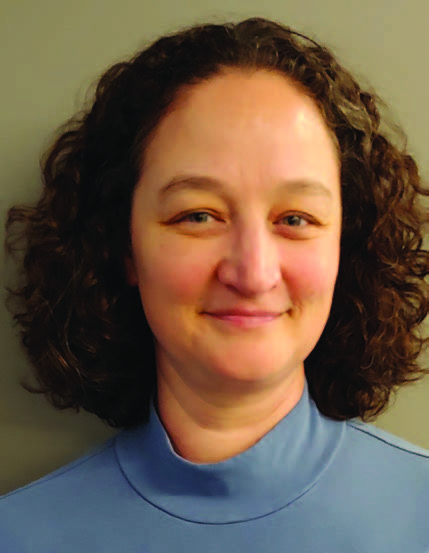 What projects are you working on now?
What projects are you working on now?
Currently, I am working on cold helium circulation systems and magnet pre-coolers design for manufacturability updates. I am also working on the production release of Bluefors’ PT450 / CP3000 two-stage pulse tube cryocooler system that can produce 5W at 4 K.
What accomplishment are you most proud of? What was the challenge and how did you and/or your team meet it?
I’m most proud of my team’s ability to meet the demands of our rapidly growing company and adjust to new expectations of design and production capacity. Without adding new resources, we have found ways to get ahead of demands from manufacturing and sales and standardize designs for better engineering time efficiency.
What advancements in cryogenics are you hoping to make in the future?
I’m hoping for high market adoption of our low vibration reliquefier for NMR applications in order to reduce the infrastructure needed for helium recapture and reliquefaction in a laboratory setting.
What advances for women would you like to see in the fields of cryogenics and superconductivity?
I would like to see more women working in commercial manufacturing and design, continuing the progress of breaking barriers in traditionally male-dominated fields.
What would be the best approach to getting more women into your field?
I have a few ideas: company policies that support individuals in their role as primary caregivers, such as maternity/paternity leave and flexible work-from-home arrangements; educating men to become upstanders and allies rather than bystanders, fostering inclusive working environments for women; and recognizing diverse perspectives, learning styles and communication styles as contributors of equal value to design and innovation.
Anne-Marie Valente-Feliciano
Senior SRF Accelerator Physicist and SRF Process & Materials Group Leader, Jefferson Science Associates, LLC (the management and operations contractor for the US Department of Energy’s Thomas Jefferson National Accelerator Facility – CSA CSM)
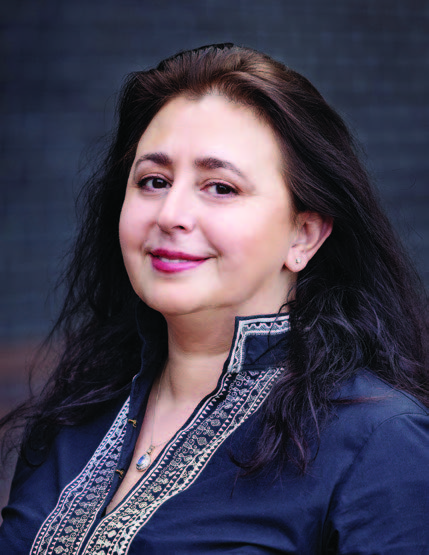 What projects are you working on?
What projects are you working on?
For almost four years, I have been working on designing the cryogenic instrument CHAI for the Fred Young Submillimeter Telescope, which is currently under construction. CHAI will be the first 64-pixel heterodyne receiver for frequencies around 475 GHz and will observe the interstellar medium in the Milky Way and nearby galaxies. Currently, our team manufactures the cryostat and performs tests of the superconductive detectors and the signal processing chain so we can start the series production for all 64 pixels soon.
What accomplishments are you most proud of?
The dimensions of the cryogenic Focal Plane Unit (FPU) of CHAI are just 6.4x5.6x5.1 inch (162x142x130 mm) but contain the entire heterodyne signal processing chain for all 64 pixels. The entire FPU is cooled down to 4 K, using two powerful pulse tube refrigerators to cope with the power dissipation of the signal amplifiers. It took us more than four years of collaborative work to find a feasible design that fulfills all thermal, electrical, optical and mechanical requirements. I am especially proud of the optical array nicknamed CHARM, which divides the telescope beam evenly into 64 sub-beams and feeds them into the signal mixers. It will be one of the first parts manufactured in series production this summer. The entire manufacturing will be done by our in-house high precision mechanical workshop.
What advancements in cryogenics are you hoping to make in the future?
Our plan for the next years is, of course, to successfully manufacture, assemble, test and commission the CHAI instrument which will be one of the first light instruments on the FYST telescope, currently planned for 2025. Apart from that, our working group wants to go into research and development of a new type of cryogenic detectors called MKIDs (Microwave Kinetic Inductance Detectors). From a cryogenic perspective, these detectors are much more challenging than our current instruments because they require millikelvin temperatures instead of 4 K. My team and I are looking forward to facing these upcoming challenges.
What advancements for women would you like to see in the industry, and what is the best approach to attracting more women into the field?
I have a feeling that there is increased awareness of diversity issues in our field presently and that current unbalances will be eliminated soon. I would like to see equality between women and men, especially when it comes to salary or application processes. I am convinced that doing public outreach, especially for young graduates and students, is a practical approach. When I was attending university, there were not many opportunities to learn about the field of cryogenics and superconductivity, and, therefore, not many fellow students decided to take classes in this field.
Saee Vyawahare
Cryogenic Process Engineer—SLAC - Stanford National Accelerator Laboratory (CSA CSM)
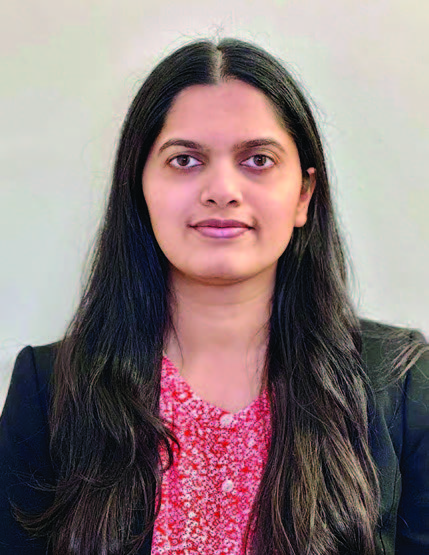 What projects are you working on now?
What projects are you working on now?
I have worked on the LCLS-II project, which is an upgrade to SLAC’s original copper accelerator (LCLS-Linear-Accelerator Coherent Light Source) to make it superconducting. Superconductivity allows making the accelerator beam 10,000 times brighter than the original. The LCLS-II accelerator consists of 37 cryomodules equipped with niobium RF (radio frequency) cavities; niobium becomes superconductive at cryogenic temperatures (
Currently I am working on the LCLS-II cryoplant operation and on SLAC’s future cryogenics infrastructure which includes LCLS-II HE, the next upgrade to the LCLS-II project, and CRMF, a novel cryomodule facility at SLAC. I am also involved in projects aimed at providing cryogenics to support the development of quantum computing.
What accomplishment are you most proud of? What was the challenge and how did you and/or your team meet it?
The cryogenic team formed at SLAC for the LCLS-II cryoplant is young and did not exist in 2016 at the beginning of the LCSL-II Project. The team had to integrate, install, automate and commission two world-class cryoplants in parallel and connect them with a 700 m linear accelerator. Most of the commissioning was accomplished during the pandemic amid travel restrictions and with very limited local support from vendors and partners. Despite the challenges, the project was a success and most of the system commissioning was completed as planned. The team achieved 2 K temperatures for the first time in April 2022. This was an important milestone for the LCLS-II project and the lab. The following year the team faced power outages in California due to wildfires, causing the cryoplant to fail. It needed a lot of coordination between the process, controls and operations teams to recover from trips and reestablish stable conditions. In September 2023, more than a year later, the lab achieved its “first light” (generated X-rays in a superconducting environment), which was celebrated across DOE as an historic moment for the scientific community. Achieving and maintaining 2 K temperatures is central to the success of LCLS-II, and I am very proud of this achievement as a part of the cryogenic team.
What advancements in cryogenics are you hoping to make in the future?
It is an exciting time to be working for the SLAC cryogenics division in the heart of Silicon Valley while tech companies actively explore the quantum world. Though SLAC is engaging in some exciting projects, I expect to see further development in cryogenics to support quantum technology initiatives. I am keen on working for such initiatives.
What advances for women would you like to see in the field of cryogenics and superconductivity?
It is encouraging to see more women in the C-suite when we look at the statistics and reports on women in the workplace. At the Department of Energy, for example, the secretary, Jennifer M. Granholm, and other top leaders in science are women. Despite the trends, one of the challenges we face is the ratio of women/men applicants, which is still very low in open positions. I would like to see more women with STEM backgrounds apply and continue to stay in STEM jobs. SLAC conducts a summer internship program called SAGE, exclusively for high school girls to develop early interest in science. Other national labs also have good summer camps/internship programs in the field. Further, creating more networking opportunities for women at the workplace is essential for advancement in cryogenics.
What would be the best approach to getting more women into your field?
Every year SLAC organizes a weeklong summer camp for high school girls in the area called SAGE. As a volunteer, I did job shadowing to give the students an idea of what a typical day at the cryoplant looks like. The on-site experience proved to be quite immersive and a major takeaway for the students. They got really involved and curious while touring the facility, interacting with the staff, asking questions and understanding the science behind cryogenics. SAGE is a great platform for female students to learn about science. Also, the activities and interactions through various sessions with physicists and cryogenic experts could go a long way in inspiring and creating the cryogenic women of tomorrow. Extending such programs into internships would give students more comprehensive experience in the field.


